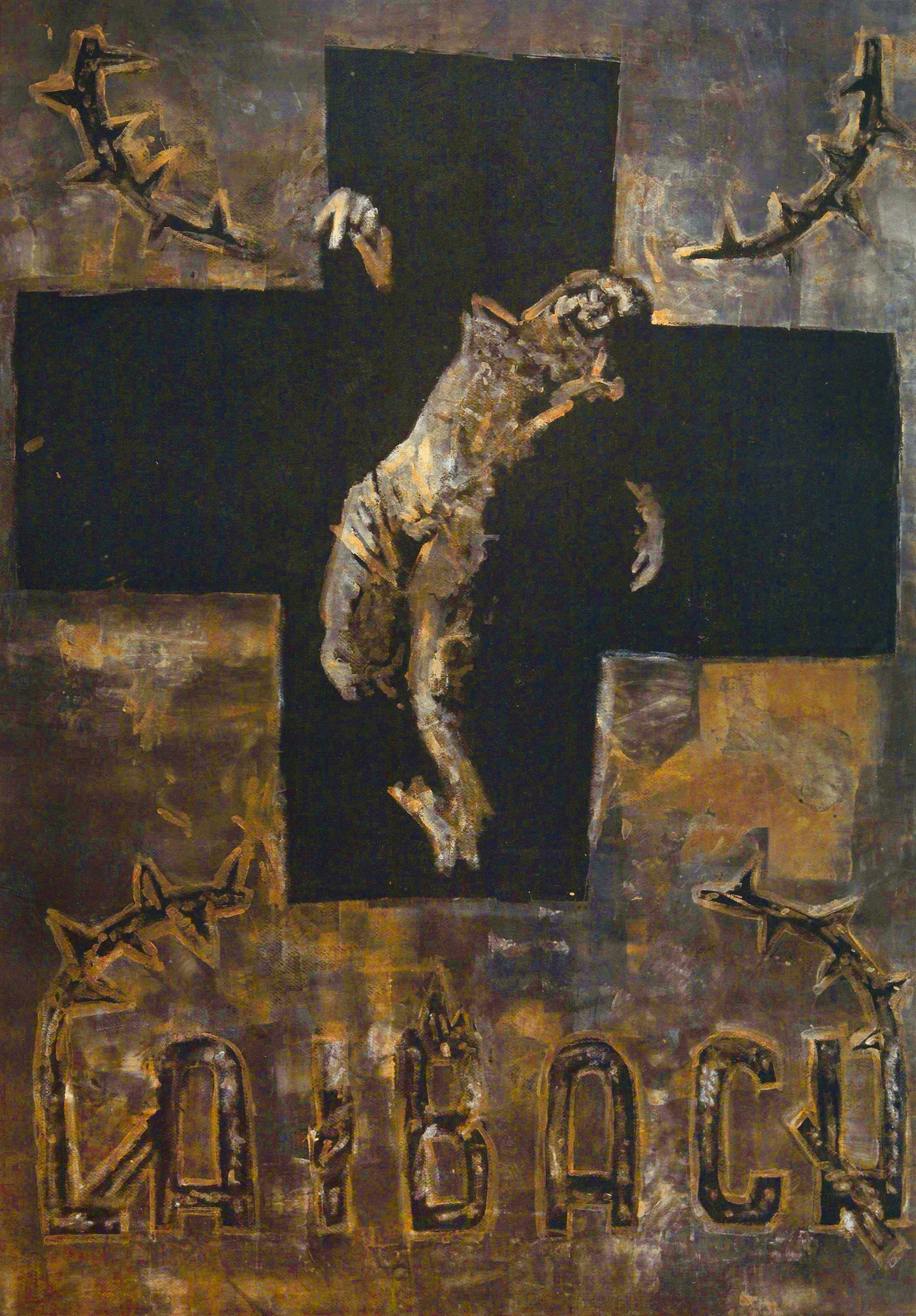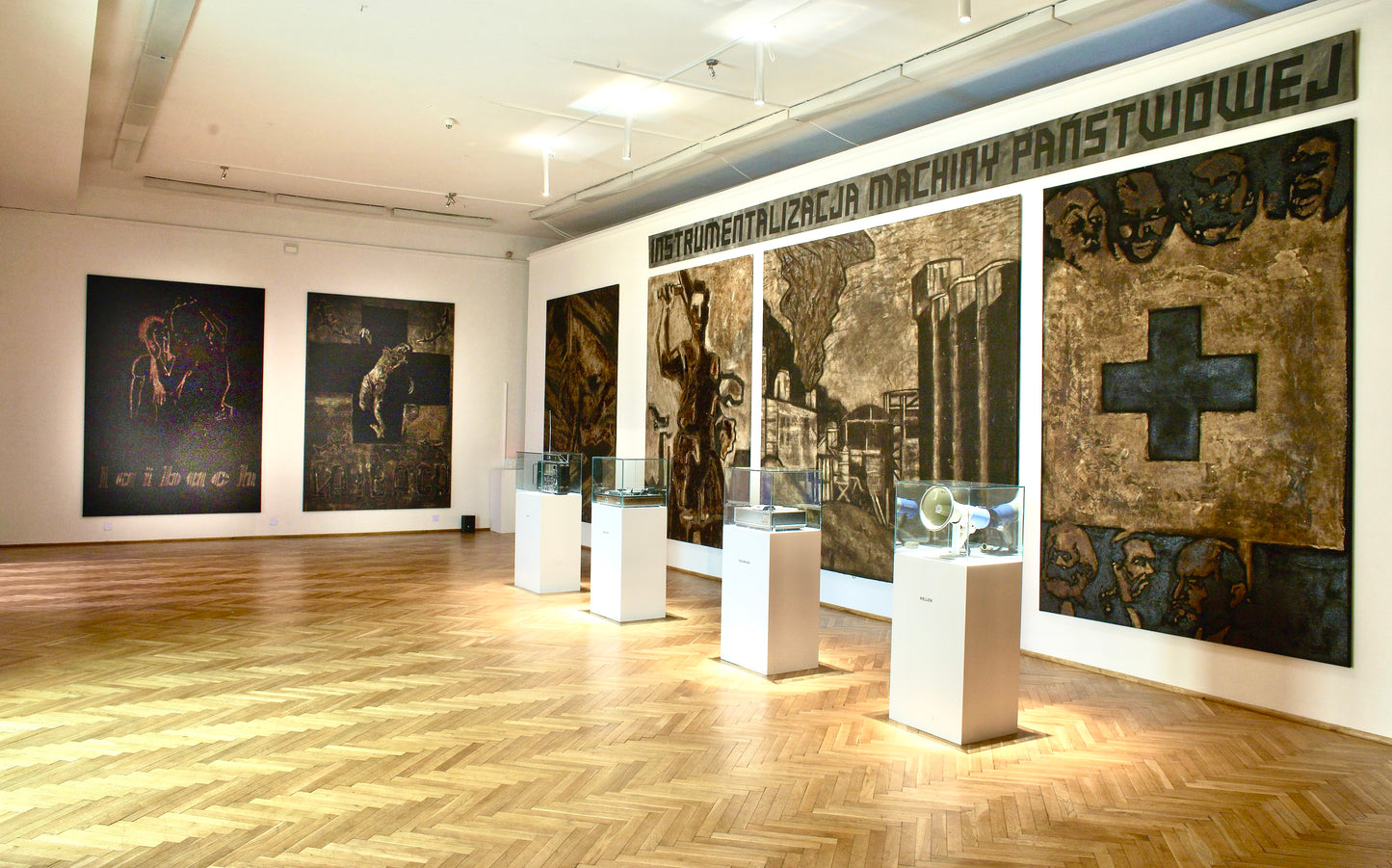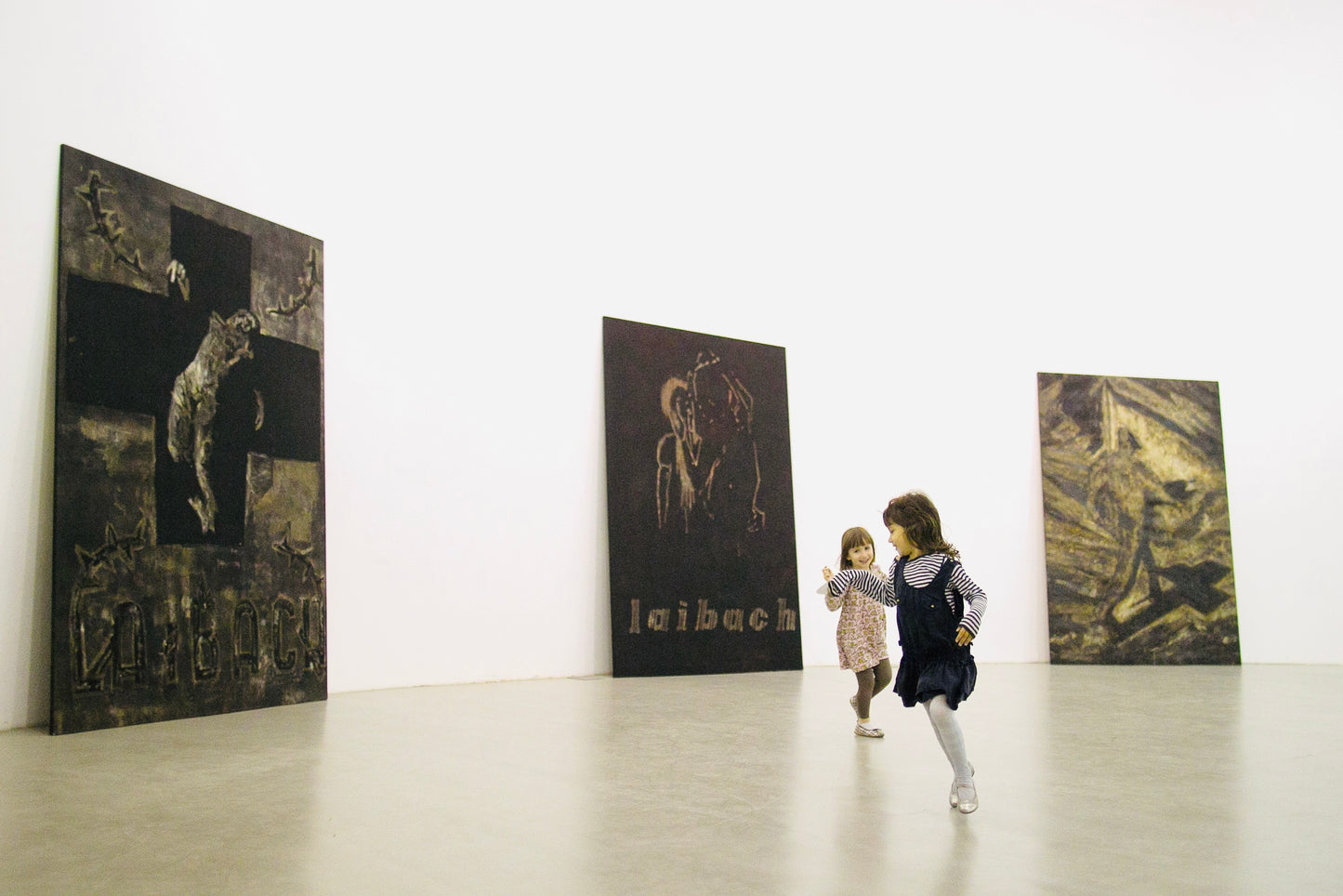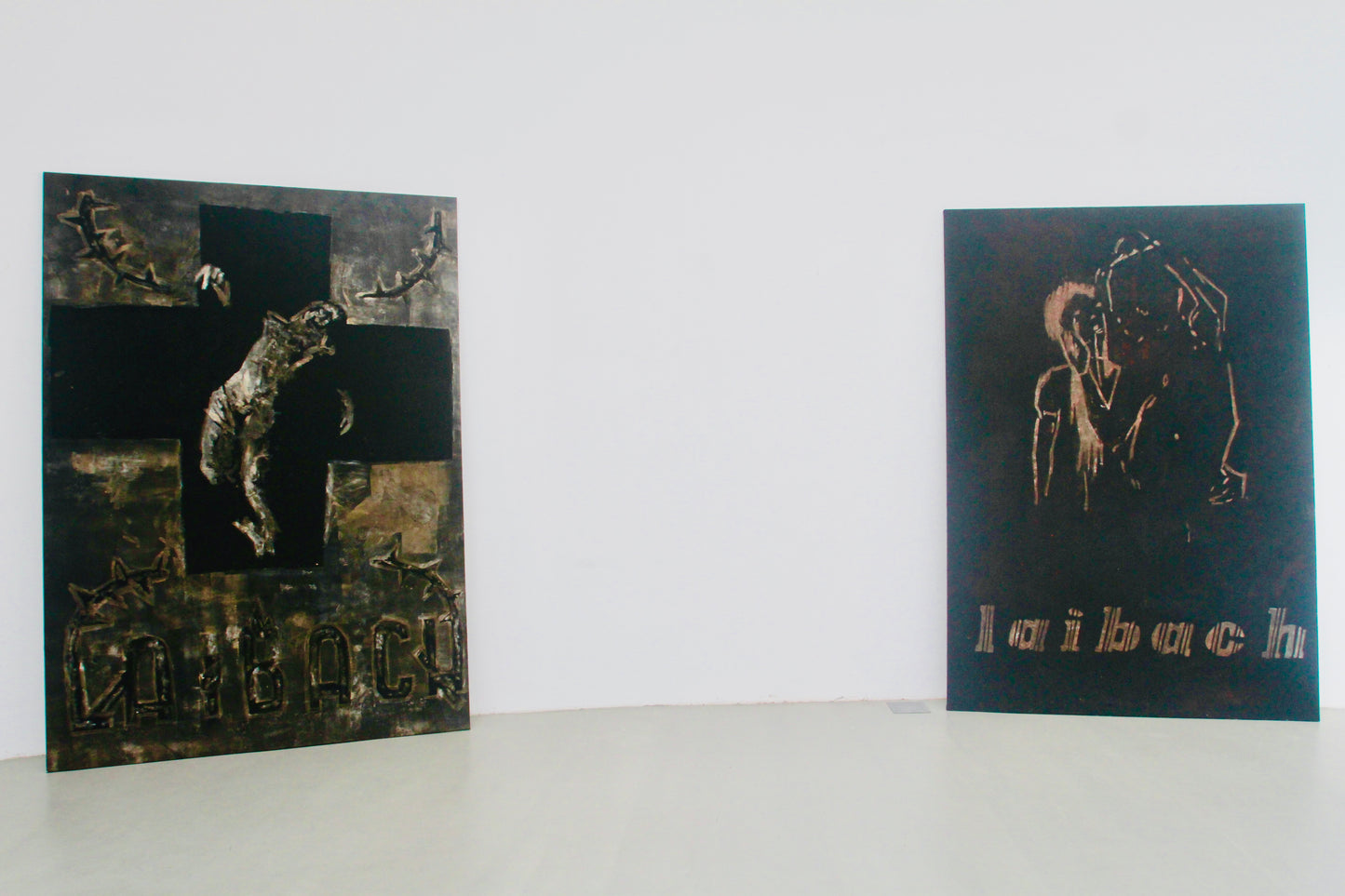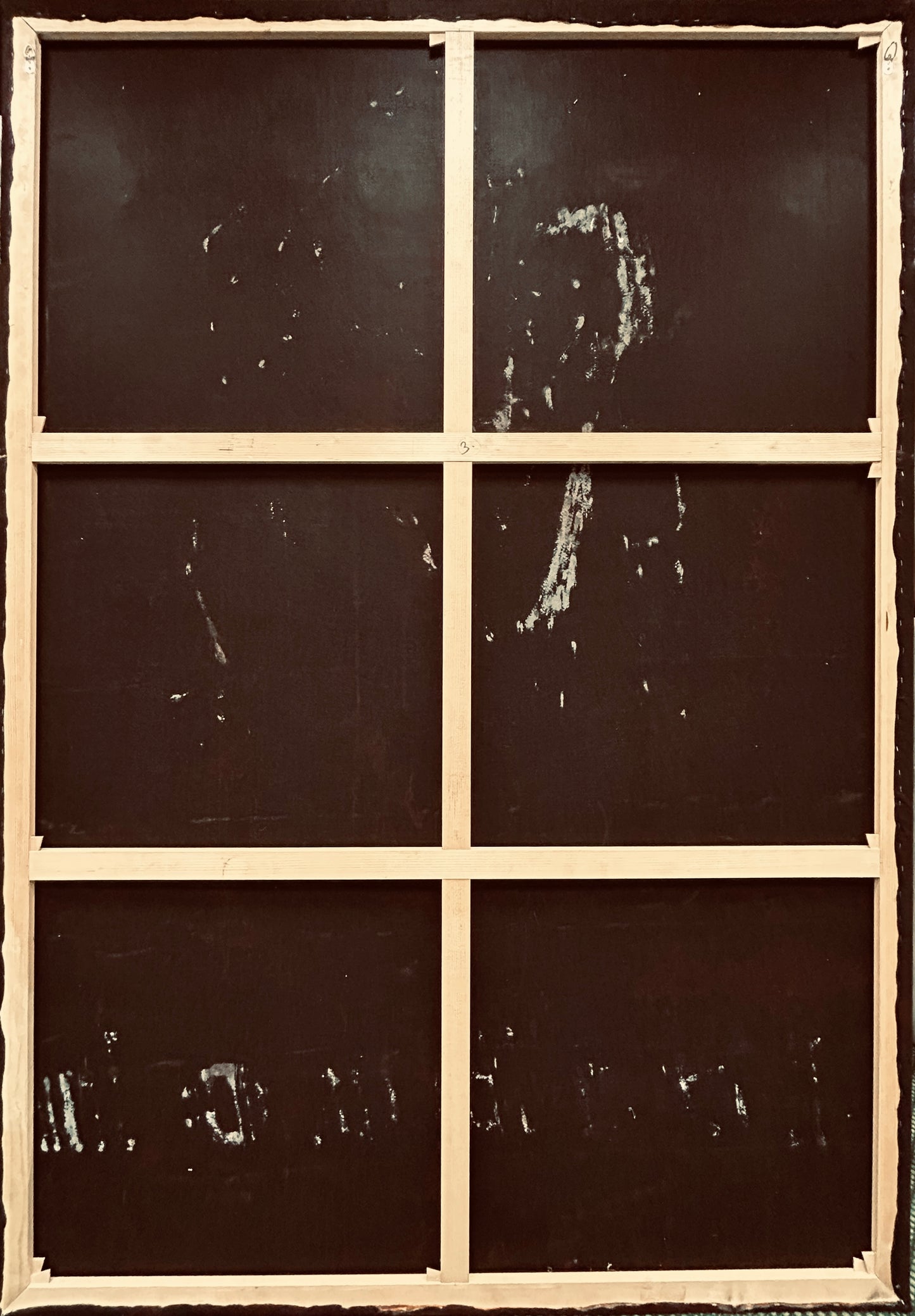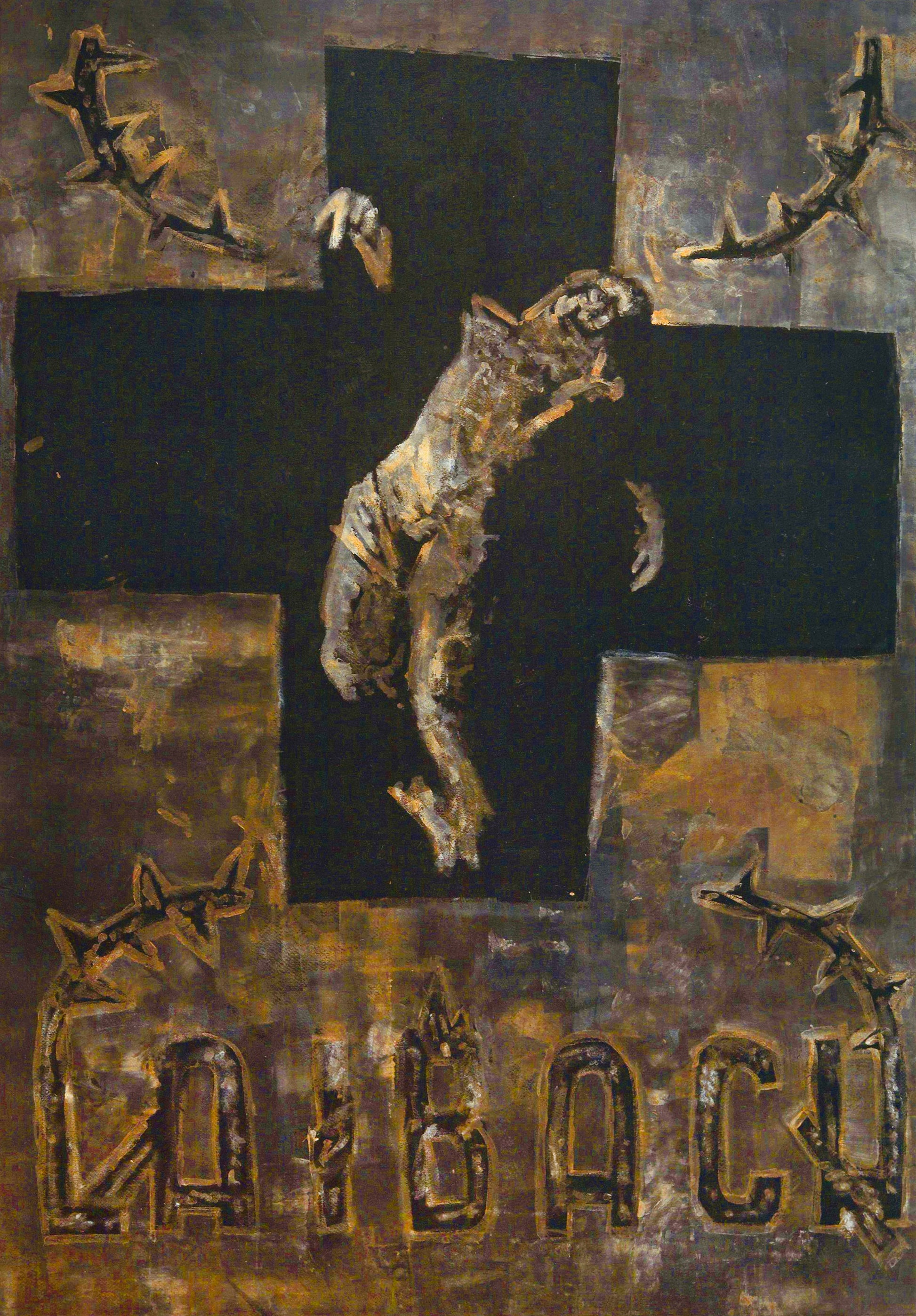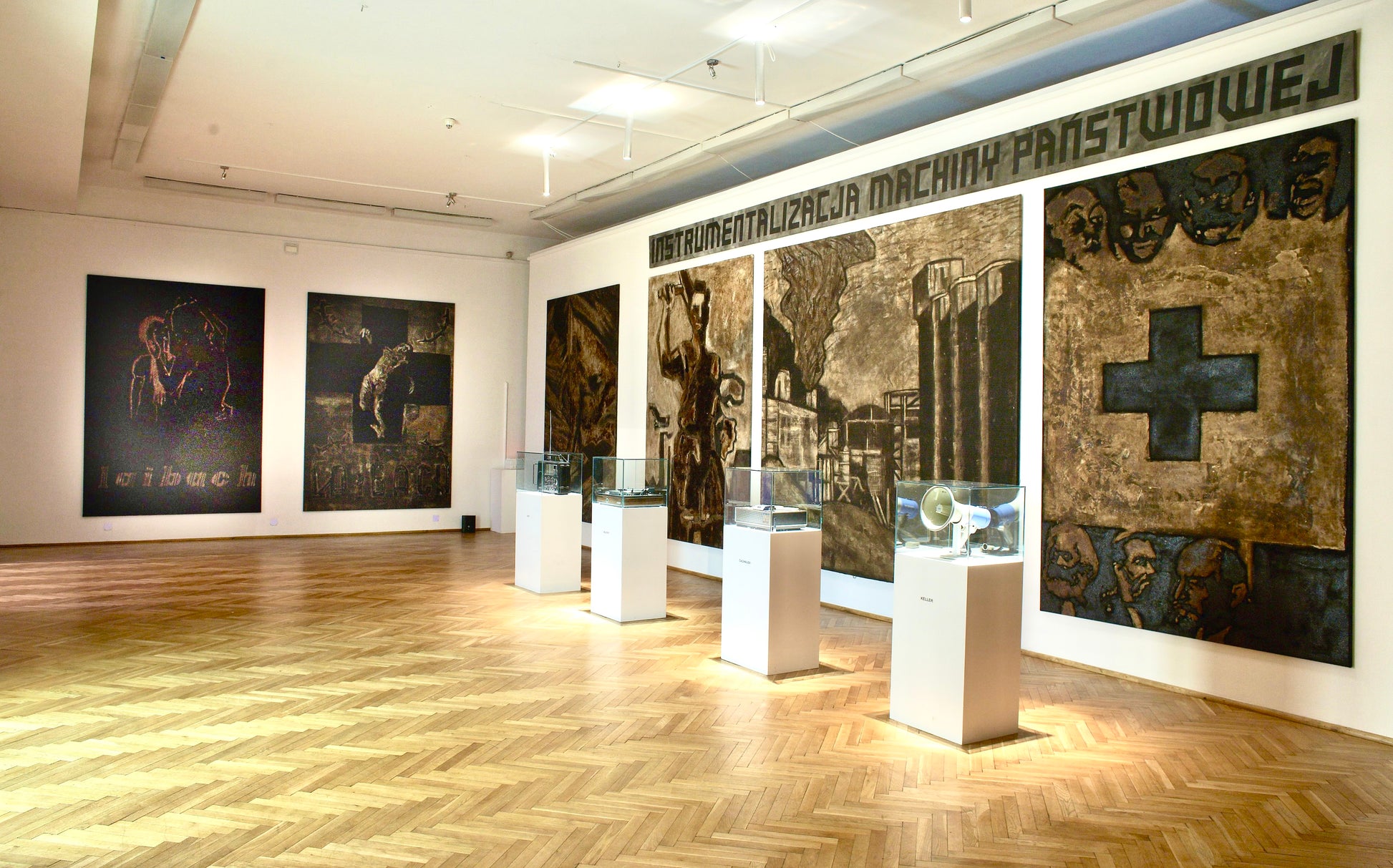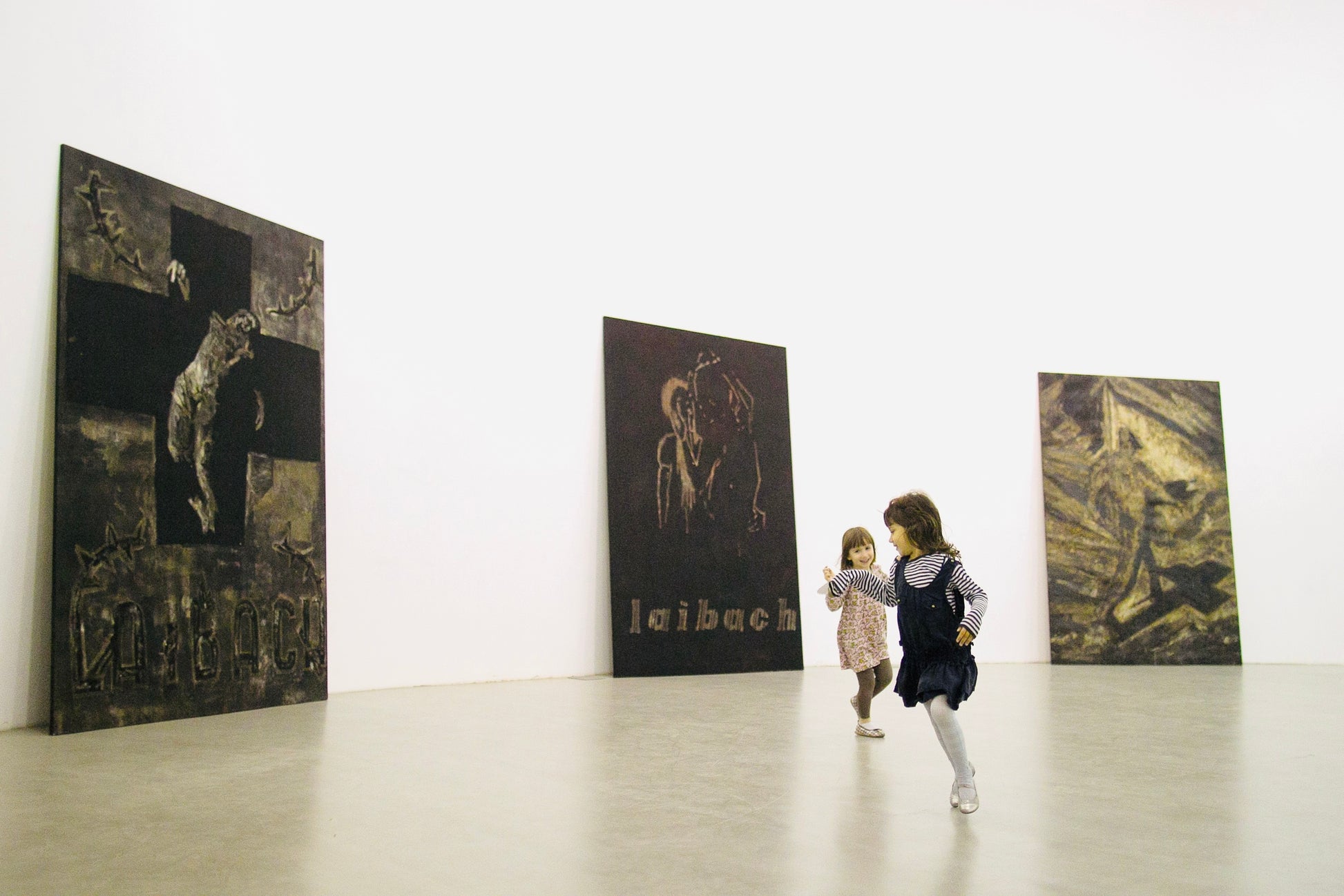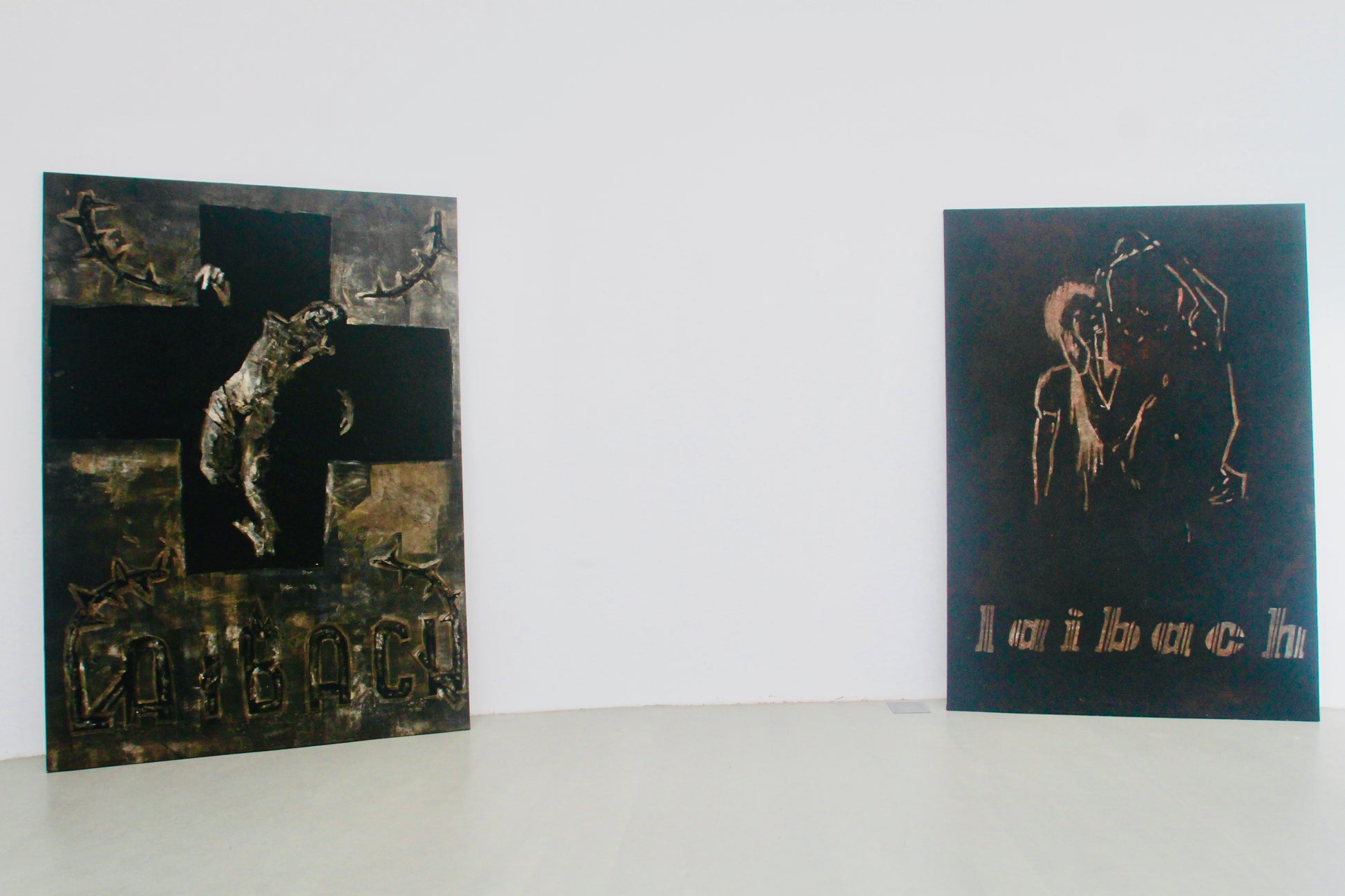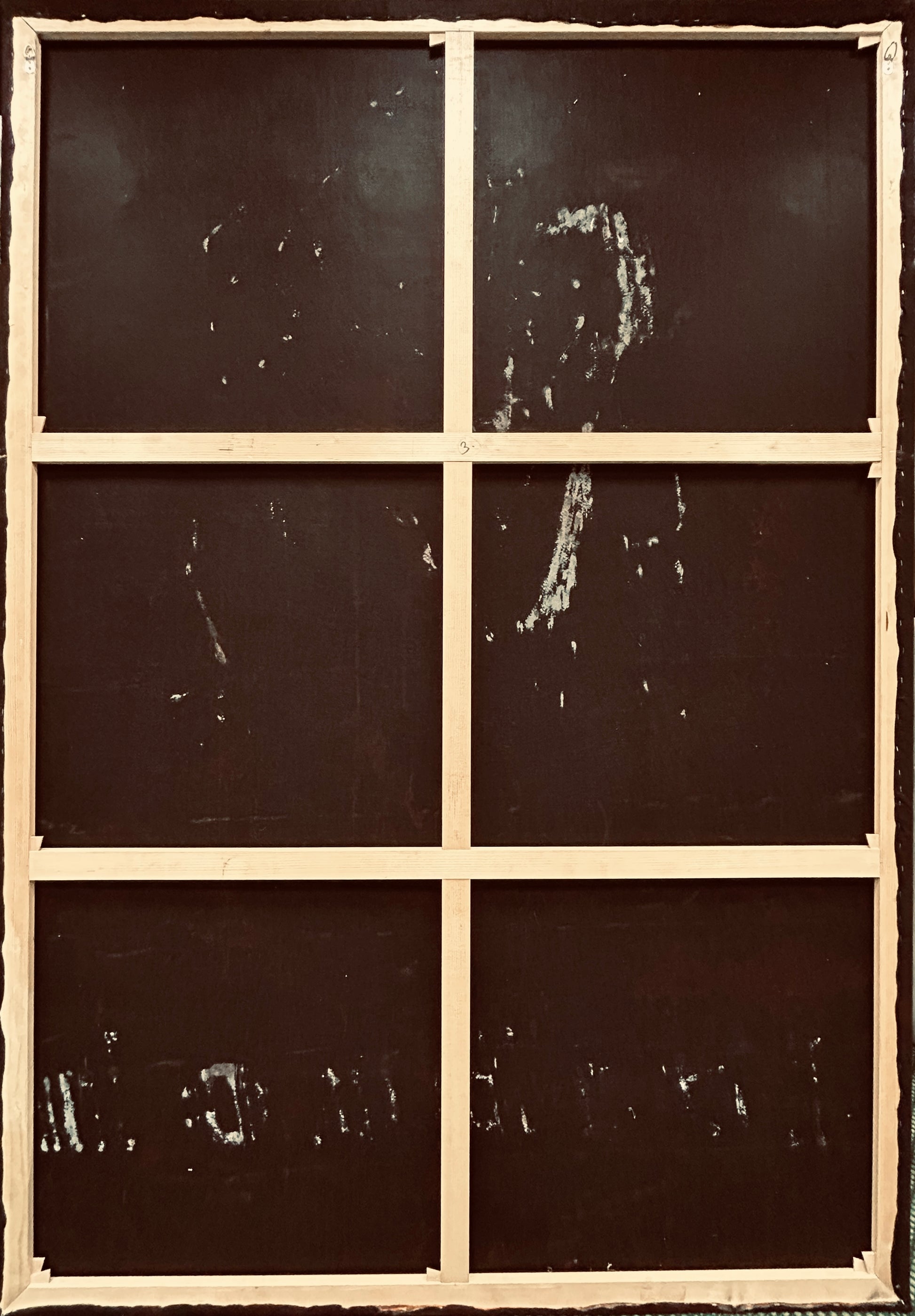Laibach WTC
RESSUR EXIT
1986/2009, acrylic on felt canvas, 280 x 195 cm
Unique work
Couldn't load pickup availability
Instrumentality of the State Machine – Ressur Exit, painted, signed, and stamped by Laibach
On 27 April 1985, Laibach finally released their first album in Slovenia containing music recorded in 1983. The album was originally meant to be released on the state-owned ZKP RTV label (Založba kaset in plošč - RTV Ljubljana), but due to the banning of the band's name and consequent activities, the album was not released until two years later, and even then only in a censored form (with no mention of the band's name).
On this occasion Laibach created a promotional poster which - in addition to the album cover - also featured the band's name. The main motif of the poster is a black cross - Laibach's distinctive symbol - to which is added the figure of the Saviour on the cross, borrowed from an anti-Nazi poster made by John Heartfield in 1934.
The title of Heartfield's poster is "As In The Middle Ages ... So In The Third Reich", and it consists of two parts: the illustration above shows a medieval sculpture of Saint George tied to a large wooden wheel, while the bottom shows a similar victim of National Socialism tied to a swastika.
John Heartfield used his friend Erwin Geschonneck as a model for the victim, who posed naked for the photo on an equilateral (i.e. Greek, Swiss, etc) cross, the kind used by Laibach on their poster. The title "Resurr Exit" is a play on the Latin word resurrexit, meaning rebirth or resurrection.
The present painting itself was created in 2008–2009 as part of a larger installation, entitled “Instrumentality of the State Machine”, which Laibach first presented in this setting in 2009 at their extensive retrospective exhibition “AUSSTELLUNG! LAIBACH KUNST – RECAPITULATION”, at the Muzeum Sztuki Gallery of Modern Art in Łódź, Poland, and later as well in an exhibition in Zagreb, at Dom HDLU 2011, entitled “AUSSTELLUNG! LAIBACH KUNST – Ceci n'est pas Malevich”.
Created by members of Laibach, signed with four names (Eber, Saliger, Dachauer and Keller), and stamped with the group's emblem as well as their collective signature.
Terms and details:
Upon prior request, it is possible to view artwork live at a Laibach WTC location in Ljubljana, Slovenia. If you are interested in doing so, please write to wtc.support@laibach.org.
The listed price includes 9,5% value-added tax (VAT). If you are located outside the EU, or are a legal entity that is part of EU reverse charge system, you may take this into account when submitting your offer.
The stated purchase price is valid upon collection at a Laibach WTC location in Ljubljana and does not include the shipping, insurance, customs and excise charges, or import / export fees. After the payment for the artwork will be received, the Laibach WTC team will contact the buyer regarding collection or shipping.
Upon prior agreement with the buyer, and at the buyer’s expense, Laibach WTC can arrange shipping and possible insurance of the item. The shipping fee will depend on the location of the buyer and the size and weight of the item. When exporting artwork outside the EU, Laibach WTC will also prepare the necessary documentation for export customs clearance, but the buyer will be responsible for the payment the customs and excise and export / import fees.
For all other issues, the Terms of service of the Laibach WTC online store apply.
Laibach first presented the motifs of the Red Districts in 1980 at the Delavski dom (Workers' Home) culture centre in Trbovlje – at an exhibition that never took place (because it was banned by the local municipal authorities). Subsequently, Laibach presented the same motifs at their first exhibitions in Belgrade (Srećna galerija, 1981), Ljubljana (ŠKUC Gallery, 1982), and Zagreb (PM Gallery, 1983).
In the following decades, the group showed various variations of the Red Districts in some of their major exhibitions. In 2009, eight motifs were printed on aluminium plates and presented at retrospectives of their visual work in Łódź (Muzeum Sztuki, 2009), Maribor (UGM, 2011), Zagreb (HDLU, 2011), as well as in Olomouc (Galerie Caesar, 2016) and some other galleries.
The original linocuts represent historical motifs from the so-called Red Districts, as the industrial basin of Slovenia in the Zasavje region is called, which encompasses the towns of Trbovlje, Zagorje, and Hrastnik, i.e. the environmental area where the band Laibach were formed in 1980. These ‘industrial’ motifs became part of the basic aesthetic content of Laibach, which never denied their industrial-cultural origins, and after the formal establishment of the broader umbrella art formation Neue Slowenische Kunst (1984–1992), these motifs were adopted and appropriated from Laibach by other NSK groups, most notably by the Irwin painting group.
Share
